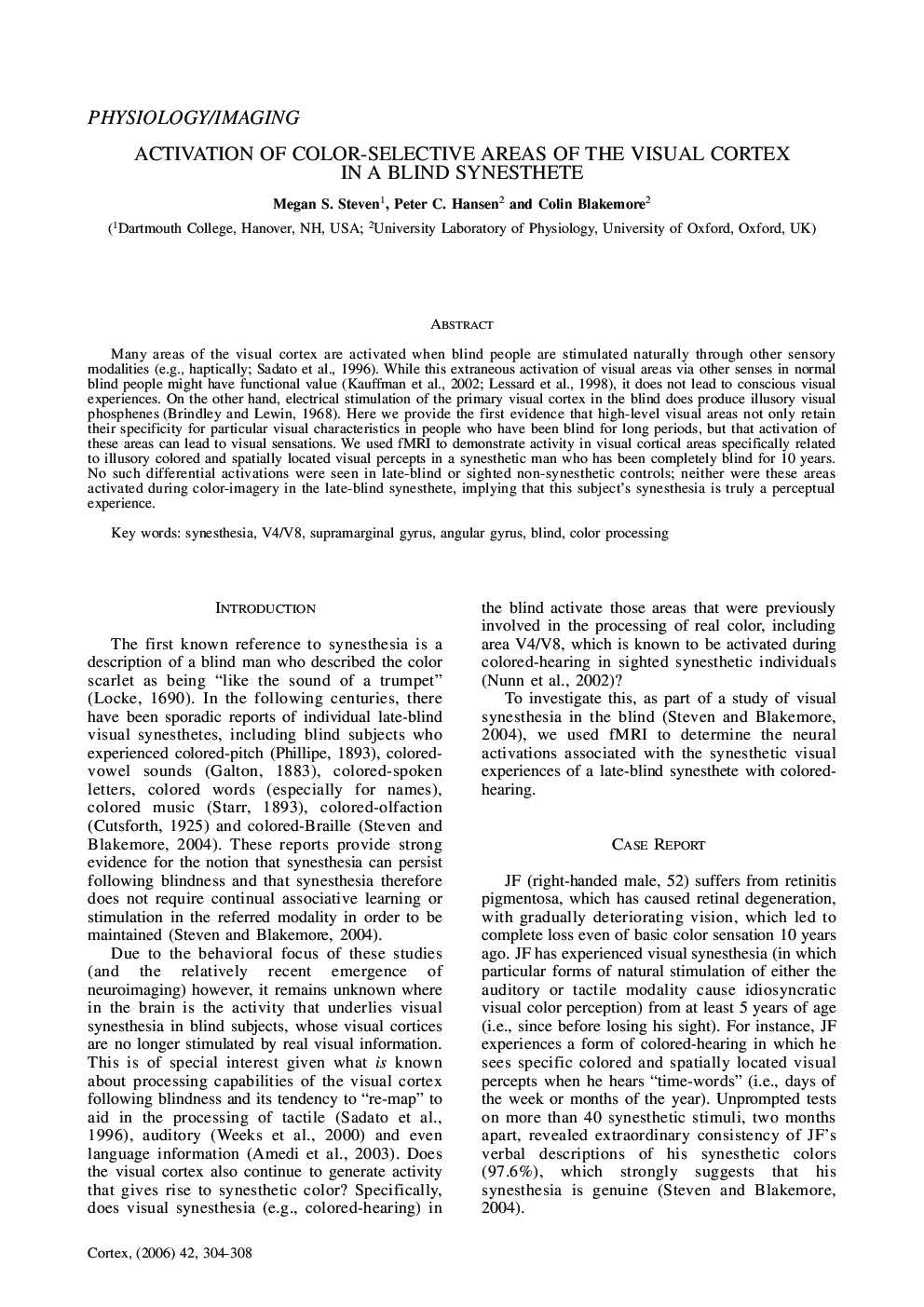| Article ID | Journal | Published Year | Pages | File Type |
|---|---|---|---|---|
| 943041 | Cortex | 2006 | 5 Pages |
Many areas of the visual cortex are activated when blind people are stimulated naturally through other sensory modalities (e.g., haptically; Sadato et al., 1996). While this extraneous activation of visual areas via other senses in normal blind people might have functional value (Kauffman et al., 2002; Lessard et al., 1998), it does not lead to conscious visual experiences. On the other hand, electrical stimulation of the primary visual cortex in the blind does produce illusory visual phosphenes (Brindley and Lewin, 1968). Here we provide the first evidence that high-level visual areas not only retain their specificity for particular visual characteristics in people who have been blind for long periods, but that activation of these areas can lead to visual sensations. We used fMRI to demonstrate activity in visual cortical areas specifically related to illusory colored and spatially located visual percepts in a synesthetic man who has been completely blind for 10 years. No such differential activations were seen in late-blind or sighted non-synesthetic controls; neither were these areas activated during color-imagery in the late-blind synesthete, implying that this subject's synesthesia is truly a perceptual experience.
